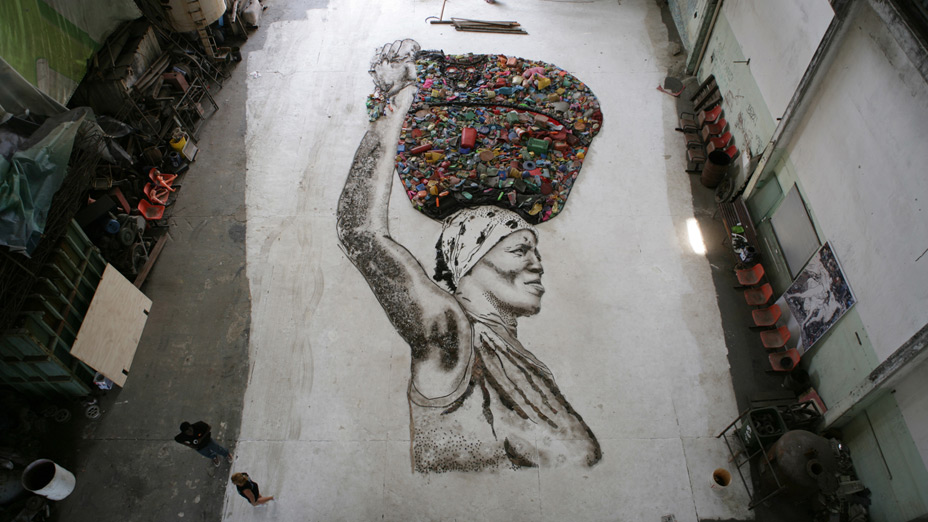Finding beauty in a world of waste
Artist Vik Muniz explores the visible and the hidden in an unusual mix of materials
By DONALD EUBANK
Staff writer
"If we live in a creative universe, we are constantly pushing the chaos out of the way to protect ourselves from the nonlogical — the natural," muses Vik Muniz at an interview late last year at Tokyo Wonder Site. "Even when you think, you create waste. But everything is made in a way to conceal the waste.
The New York-based artist isn't afraid to step into that chaos. One of his latest projects, currently on show at Tokyo Wonder Site's Shibuya galleries, was realized in the biggest garbage dump in the world, Jardim Gramacho, north of Rio de Janeiro.
There, he worked with the people who scavenge the recyclable refuse of the city — catadores in Portuguese — to make a living. Muniz, who grew up in Brazil, works in unexpected mediums, taking photographs of drawings he does out of sugar, chocolate, dust. But he had always wanted to do something with trash.
"The beautiful thing about garbage is that it's negative; it's something that you don't use anymore; it's what you don't want to see," says Muniz in a movie made about the project with British documentary director Lucy Walker and Brazilian director Joa~o Jardim (tentatively titled "Extraordinary Garbage" or "The Art of Garbage"). "So, if you are a visual artist, it becomes a very interesting material to work with because it's the most nonvisual of materials. You are working with something that you usually try to hide."
The artist believes that the catadores too are invisible within the class system of Brazil. An estimated 3,000-5,000 people live in the dump, 15,000 derive their income from activities related to it, and some that Muniz met in Jardim Gramacho come from families that had been working there for three generations.
"These people are at the other end of consumer culture," he says. "I was expecting to see people who were beaten and broken, but they were survivors."
His aim — besides the creative challenge — was to see not only if the experience of creating art could change people, but, to answer the question, "can you change people; can this be done?"
Muniz selected a number of the catadores to collaborate with him to make their own portraits, including Irma~, a cook who sells food in the dump; Zumbi, the resident intellectual who has held onto every book he's scavenged; and 18-year-old Suelem, who first arrived there when she was 7. He rented 4 tons of junk and a warehouse, and together they arranged the trash on the ground to replicate photographs of themselves that Muniz had taken earlier. Then they would climb up to the ceiling and take photos of the compositions from 22 meters high.
The portraits of the people are made out of empty spaces, out of what wasn't garbage. Shown themselves in this light, the trash collectors were astonished. Two have since left the dumps; another, Tia~o, is using $64,097 from the project — money Muniz raised in an auction at Phillipe de Pury in London by selling the portrait he did of the politically active young catadore — for the Garbage Pickers Association of Jardim Gramacho.
"Ask them what they need, and they usually say 'nothing.' They live in a very civilized, honest way," observes Muniz. "People at the margins, including artists, we don't have power, but we have freedom."
Excerpt from: The Japan Times: Thursday, Jan. 1, 2009

No comments:
Post a Comment